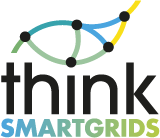Increasing the share of renewable energies in the energy mix is a crucial challenge to decarbonize energy production, the world’s leading source of anthropogenic greenhouse gases. However, the variable nature of solar and wind energy production calls into question the possibility of achieving 100% renewable energy mixes at a controlled cost and without greatly increasing the number of storage facilities. While Europe has set ambitious targets for the development of renewable energies, French smart grid players are currently conducting numerous demonstration projects to optimize the integration and use of this distributed and variable production capacity on the electricity grid, with a growing number of mature projects in the industrialization phase.

On January 26th, Think Smartgrids, which federates the French smart grids ecosystem, and the Smile, association, a collective regional project to develop smart grids in Brittany and Pays-de-la-Loire, hosted two round tables on the Enlit Europe platform (formerly European Utility Week) to take stock of the technologies proposed by French companies to optimize the integration of renewable energies (RE) into the grid.
Valerie Anne Lencznar, Managing Director of Think Smartgrids, gave an overview of the development of renewable energies in France: with a 20% increase in 5 years, the installed capacity of renewable energies will represent 55 GW in 2020, with 95% of installations connected to the distribution network and 123 TWh produced annually, making France the second largest producer in the European Union. While the transmission system operator RTE recently published published a study confirming the feasibility of a 100% RE mix in France, the French industry has already been working for several years on ambitious projects that pave the path to that direction. In particular, Ms. Lencznar mentioned the project led by EDF and Enedis to develop a 100% renewable mix on the Ile de Sein, an island grid in Brittany, thanks to an advanced Energy Manafgement System (ES), Linky smart meters and advanced control of building consumption.
The dynamism of the French smart grids sector in the development of collective self-consumption projects and micro-grids was also illustrated by the projects discussed during the panel moderated by Marine Gabory of the Smile association. Henry le Gallais, founder of the Breton SME ENAG, presented the Glenan “smart island” project. ENAG, a specialist in energy conversion systems, is optimizing the production and consumption of renewable energy, which already accounts for 95% of the energy consumed on the island, with a system combining solar, wind, batteries and air compressors.
Enerfox, an SME specializing in smart energy management services, is working to optimize not only storage, but also battery life, which is essential for a low-carbon energy transition. Nicolas Samon, head of business development at Enerfox, spoke about the projects carried out to optimize energy storage and consumption cycles, prioritizing daytime use and assessing the impact on battery life. In low-light periods, Enerfox is also testing reversible solar panels that capture radiation from the ground and other surfaces via the albedo effect.
Linda Lamraoui, head of marketing and development at Engie home performance, also mentioned the Harmon’Yeu project led by Engie to develop collective “self-consumption” on the island of Yeu in Brittany. Homes that produce (and consume) energy thanks to solar panels installed on their roofs also supply the electrical equipment of their neighbors’ houses (heating, hot water, lighting, household appliances…), within a real energy community.
In order to optimize the integration and use of renewable energy sources in the electricity grid, the French smart grids ecosystem is particularly active in the area of data processing and the development of solutions based on artificial intelligence. Thomas Bazin, Strategic Account Executive at Schneider Electric and Chairman of the International Commission of Think Smartgrids, also stressed the importance of data and AI to enable RE to participate in ancillary services, to improve decision models, or to plan the production and distribution of RE.
He then interviewed Olivier Genest, director of the SME Trialog, who chairs the data management working group of the European initiative BRIDGE, that gathers more than 60 H2020 smart grid projects. This WG aims to overcome barriers and foster collaboration for power grids and cross-sectorial data exchanges. According to Mr. Genest, one of the key challenges for AI to facilitate the integration of renewable energies is to harmonize and define references for smart grids data and systems at the European level, and more particularly to increase the interoperability of flexibility assets, on which Trialog brings its expertise. He then presented the H2020 InterConnect (Interoperable Solutions Connecting Smart Homes, Buildings and Grids) pilot project in Toulon, France, which aims to maximize the use of renewable energy production through local flexibilities, adjusting the consumption of smart buildings and electric vehicles to the needs of the power grid. Trialog has been working on interoperable architecture and data exchange, thanks to the “SAREF ontology” (Smart Applications REFerence), a shared consensus model that facilitates the mapping of existing assets, in order to optimize the use and prediction of renewable energy sources, to provide decision support or to activate flexibilities such as EV charging.
Georges Kariniotakis, professor at MINES ParisTech and head of the Renewable Energies & Smartgrids Group ERSEI, explained how AI solutions can improve predictive models and decision support tools for large-scale RE integration. He then spoke about the European REstable project, which has demonstrated the possibility for renewable energies to participate, without storage, in energy and ancillary service markets, thanks to a virtual renewable energy power plant. He finally presented the research in the frame of the H2020 project Smart4RES that aims to improve the whole model and value chain of RE integration into electricity grids and markets. In this context, AI gives new opportunities to exploit the wealth of available data but also to simplify complex model chains. Mr. Kariniotakis stressed the importance of research carried out to increase the interpretability of AI tools so that they are more easily used in the business practice.
Finally, Vincent Renault, R&D director at Artelys, presented the AI-based algorithms developed by this company specialized in optimization, decision support and modeling in the energy and transportation sectors. Its AI algorithms reconstitute and model the loads of the power grid to help optimize the integration of renewable energies. Through simulations, these models enable to evaluate the impact of RE penetration and its behavior according to the different flexibility levers implemented Artelys, through the project Next, supported by ADEME (French Agency for ecological transition), develops the Artelys Crystal Nextgrid software that allows to carry out simulations of prospective scenarios for the evolution of large distribution power grids and the flexibility solutions to be developed. The objective is to develop a reference software platform for the planning and design of smart electricity distribution networks.
Data and AI thus seem to be the key solutions to ensure the resilience of carbon-free and flexible power grids, which accommodate a growing share of renewable energies. Many projects are already showing promising results to develop energy mixes approaching 100% RE, but flexibility and interoperability are two key issues to ensure the sustainability of these systems.
Find the webinar here / See the webpage of the French Pavilion of Enlit



